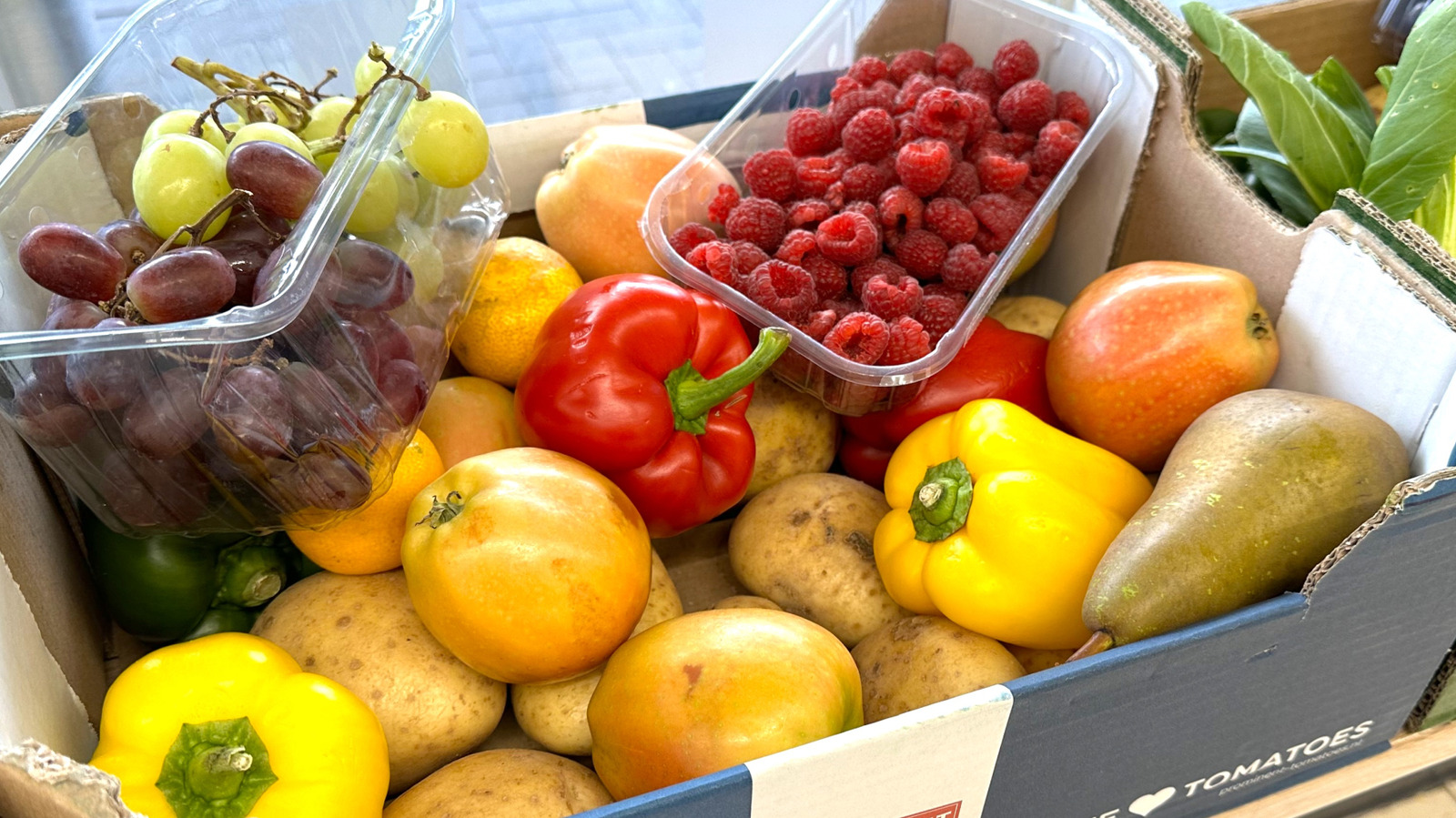According to the USDA, about 30% to 40% of the national food supply is wasted in the United States. That equates to a staggering 120 billion pounds of wasted food, or 325 pounds of food waste per person, annually, as noted by RTS. While sustainable individual choices are important, a significant portion of what’s wasted is perfectly good produce that’s thrown out or rejected at the store because it doesn’t meet grocery aesthetic standards. Luckily, there are inventive solutions to combat food waste on a systemic and personal level. Take, for instance, “ugly” produce delivery services, which rescue blemished, misshapen, or otherwise different-looking produce from farms and grocery stores and ship it to your door. Misfits Market and Imperfect Foods, two of the main players in “ugly” produce delivery, both claim their services not only reduce food waste but can also save you money and time compared to buying fruits and veggies at the store.
Misfits Market cites that as much as 5 pounds of food waste can be prevented per order of its salvaged produce, and there’s also emerging evidence that “ugly” produce may have added nutritional benefits like increased antioxidants. But, is it true that the sustainable shopping method is also sustainable for your wallet? The short answer is, it largely depends. “Ugly” produce subscription services claim to offer their products at accessible and discounted prices, yet their overall cost-effectiveness comes down to your individual purchasing habits, weekly meal needs, and geographic location.
The impact on your wallet depends on your spending habits
Imperfect Foods, Misfits Market, and other delivery companies’ online ordering platforms prompt intentionality in selecting non-GMO, organic produce, and other groceries. These services can help you cut costs if you tend to go overboard perusing store aisles, only to have produce go to waste at home. Specialty items like heirloom tomatoes and apricots, which might come with higher prices at the farmer’s market, are also accessible through these delivery services.
However, overall savings will depend greatly on the cost of living in your city or state and lifestyle factors, like whether you typically shop at discount markets or specialty stores like Whole Foods or Sprouts. If you shop in bulk, the cost savings on “ugly” produce could be worth it since some services waive delivery charges (typically around $6) for grocery orders above $60, and some services have minimum spending limits around $30. If you’re not a bulk shopper, a smaller subscription or shopping at the grocery store could be more cost-effective, and you may opt for other sustainable practices to reduce food waste, like utilizing kitchen scraps.
Buying “ugly” produce to cut waste can help reduce carbon emissions and water waste, but whether a sustainable produce service is right for you comes down to your lifestyle. The good thing is, many services offer loyalty and referral rewards, as well as trial discounts, so you can try them out and assess them with your own financial habits.






